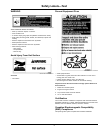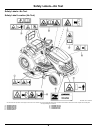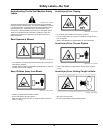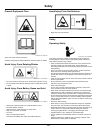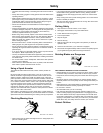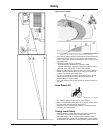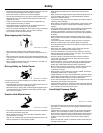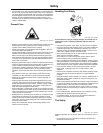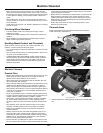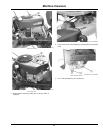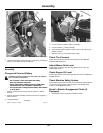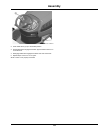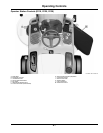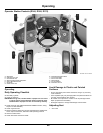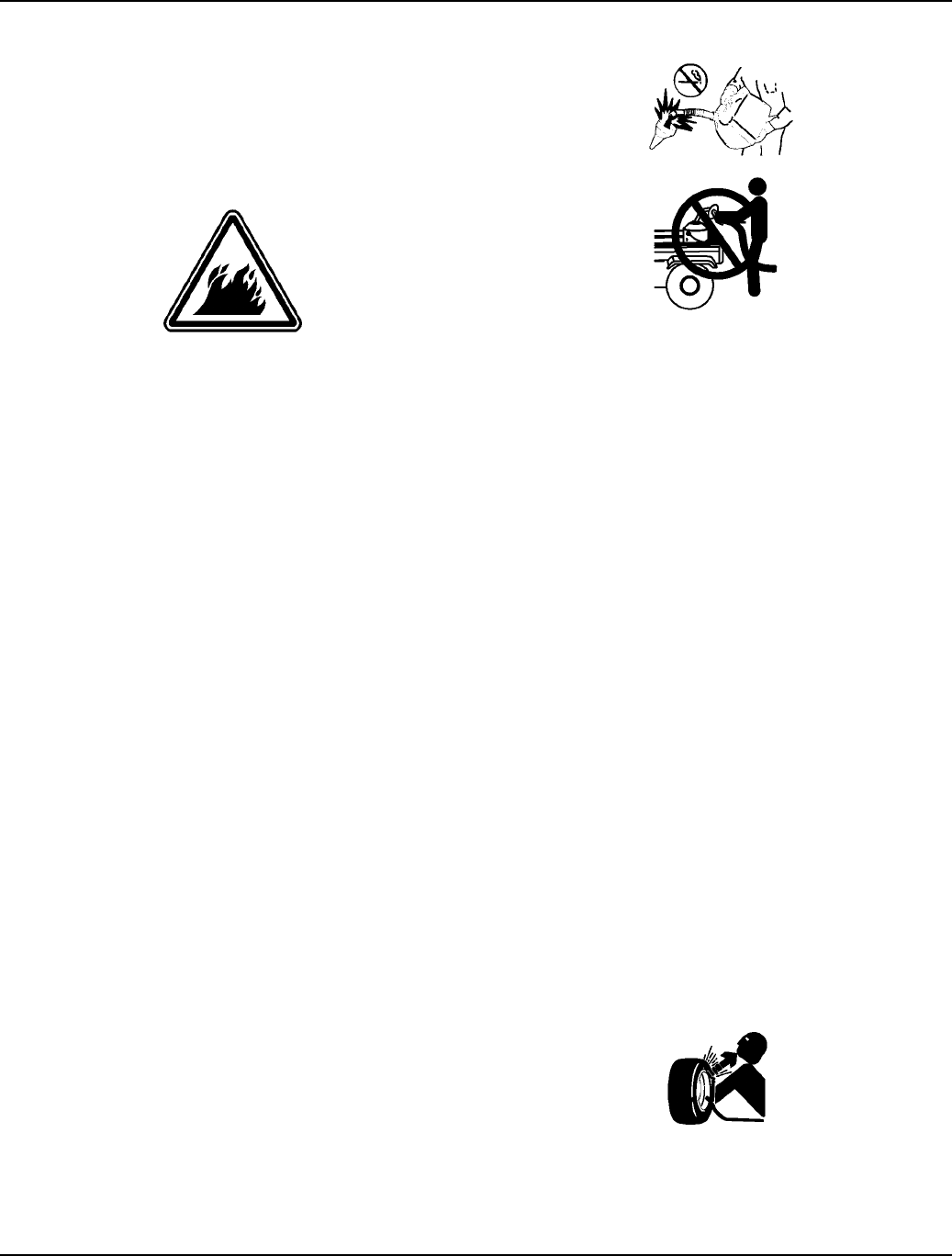
• If an accident occurs, see a doctor immediately. Any uid injected into
the skin must be surgically removed within a few hours or gangrene
may result. Doctors unfamiliar with this type of injury should reference
a knowledgeable medical source. Such information is available from
Deere & Company Medical Department in Moline, Illinois, U.S.A.
Information may be obtained in the United States and Canada only by
calling 1-800-822-8262.
Prevent Fires
MXAL41931—UN—18FEB13
• Besides routine maintenance, one of the best ways to keep your John
Deere equipment running efciently and to reduce re risk is to
regularly remove debris buildup from the machine.
• Please review these recommendations with all operators. See your
John Deere dealer with questions.
• Always follow all safety procedures posted on the machine and in this
operator manual. Before carrying out any inspection or cleaning,
always shut off engine, set parking brake and remove ignition key.
• After operating, allow machine to cool in an open area before cleaning
or storing. Do not park machine near ammable materials such as
wood, cloth or chemicals.
• Empty any grasscatcher bags or containers completely before storing.
• Frequency of these inspections and cleaning will vary depending on a
number of factors including operating conditions, machine
conguration, operating speeds and weather conditions particularly
dry, hot and windy conditions. When you are operating in these
conditions, inspect and clean these areas frequently throughout the
day.
• Wind direction, terrain type and moisture content of surrounding
vegetation can effect where and how much debris accumulates.
• Debris can accumulate anywhere on the machine, especially on
horizontal surfaces.
• Keeping engine area clean will provide the greatest impact on re
prevention. Other areas requiring regular inspection and cleaning
include behind wheel rims, wire harness, hose/line routings, mowing
attachments, etc. Compressed air, leaf blowers or high pressured
water can assist keeping these areas clean.
• Excess lubrication or fuel/oil leaks or spills on the machine can also
serve as collection sites for debris. Prompt machine repair and oil/fuel
cleanup will minimize the potential for debris collection and reduced
cooling throughout machine life.
• Bearing failures or overheating can result in a re. To reduce this risk,
always follow the instructions in the machine operator’s manual
regarding lubrication intervals and locations. Washing the machine
while warm may also reduce bearing life and increase potential for
premature bearing failure.
• Always shut off fuel when storing or transporting machine, if the
machine has a fuel shutoff.
Handling Fuel Safely
MXAL41938—UN—18FEB13
To avoid personal injury or property damage, use extreme care in
handling fuel. Fuel is extremely ammable and fuel vapors are
explosive:
• Extinguish all cigarettes, cigars, pipes, and other sources of ignition.
• Use only an approved fuel container. Use only non-metal, portable fuel
containers approved by the Underwriter’s Laboratory (U.L.) or the
American Society for Testing & Materials (ASTM). If using a funnel,
make sure it is plastic and has no screen or lter.
• Never remove the fuel tank cap or add fuel with the engine running.
Allow engine to cool before refueling.
• Never add fuel to or drain fuel from the machine indoors. Move
machine outdoors and provide adequate ventilation.
• Clean up spilled fuel immediately. If fuel is spilled on clothing, change
clothing immediately. If fuel is spilled near machine, do not attempt to
start the engine but move the machine away from the area of spillage.
Avoid creating any source of ignition until fuel vapors have dissipated.
• Never store the machine or fuel container where there is an open
ame, spark, or pilot light such as on a water heater or other
appliance.
• Prevent re and explosion caused by static electric discharge. Static
electric discharge can ignite fuel vapors in an ungrounded fuel
container.
• Never ll containers inside a vehicle or on a truck or trailer bed with a
plastic liner. Always place containers on the ground away from your
vehicle before fueling.
• Remove fuel-powered equipment from the truck or trailer and refuel it
on the ground. If this is not possible, then refuel such equipment with a
portable container, rather than from a fuel dispenser nozzle.
• Keep the nozzle in contact with the rim of the fuel tank or container
opening at all times until the fueling is complete. Do not use a nozzle
lock-open device.
• Never overll fuel tank. Replace fuel tank cap and tighten securely.
• Replace all fuel container caps securely after use.
• For gasoline engines, do not use gas with methanol. Methanol is
harmful to your health and to the environment.
Tire Safety
MXAL41937—UN—18FEB13
Explosive separation of a tire and rim parts can cause serious injury or
death:
• Do not attempt to mount a tire without the proper equipment and
experience to perform the job.
Safety
15



